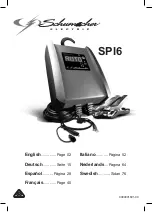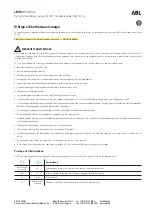
Electronic Stability Control (ESC)
ESC control intervention to reduce
the risk of skidding and improve driv-
ing stability
→
.
The indicator lamp
flashes
yellow.
Traction Control TCS
TCS control intervention to prevent
the wheels from spinning. The indica-
tor lamp
flashes
yellow.
Traction Control reduces the drive output if
wheelspin occurs and adapts the output to
suit road surface conditions. Traction Con-
trol makes it easier to pull away, accelerate
and drive up hills.
Anti-lock brake system (ABS)
ABS prevents the wheels from locking dur-
ing braking so that the vehicle can still be
steered
→
.
Brake assist system (BAS)
BAS can help to reduce the stopping dis-
tance. The brake assist system reinforces
the braking force when the driver depresses
the brake pedal quickly in an emergency
situation.
If you reduce the pressure on the brake
pedal, the brake assist system will switch
off
the brake servo function.
Electronic differential lock (EDL)
EDL brakes a spinning wheel automatically
and distributes the drive force to the other
drive wheels.
The EDL switches
off
automatically under
unusually heavy loads to prevent the brake
from overheating. The EDL switches back
on again automatically as soon as the
brake has cooled down.
Automatic Post-Collision Braking Sys-
tem
In the event of a collision, the Automatic
Post-Collision Braking System can help the
driver to reduce the risk of skidding, and the
danger of secondary collisions, through au-
tomatic braking.
The Automatic Post-Collision Braking Sys-
tem functions only for collisions that are
detected as a collision by the airbag control
unit.
The vehicle is braked automatically if the
required systems have not been damaged
in the collision and have remained func-
tional.
Prerequisite for automatic braking:
✓
The driver does not press the accelera-
tor.
Electronic brake pressure distribution
system (EBD)
The EBD regulates the braking force be-
tween the front axle and the rear axle even
outside the ABS control. Overbraking of the
rear axle is avoided and the vehicle remains
stable during braking.
Electromechanical brake servo
The EBS supports the driver’s foot move-
ment when the ignition is switched on, and
boosts the pressure applied to the brake
pedal by the driver
→
. In the event of
a braking intervention by a driver assistance
system, e.g. when Adaptive Cruise Control
is regulating or during emergency braking,
the brake pedal can move automatically.
The brake pressure boost will reduce grad-
ually
after
you switch
off
the ignition. Mes-
sages are displayed on the instrument clus-
ter display if the vehicle is still held by
means of the brake pedal. The brake servo
function is restricted in this case.
Secure the stationary vehicle against rolling
away
→
page 183.
WARNING
Driving without the brake servo or with re-
stricted brake servo function can consid-
erably increase the braking distance and
cause accidents and serious injuries.
·
Never switch the engine or ignition
off
while the vehicle is in motion.
·
If the brake servo does not function or
the vehicle is being towed, the brake
pedal will have to be depressed more
forcefully as the braking distance will
be increased due to the lack of assis-
tance for the brake system.
·
Keep the footwell under the pedals
clear so that the brake pedal can move
freely.
Brake support systems
205
2KF012
720AB
Содержание TOURNEO CONNECT
Страница 13: ...Driver door 11 2KF012720AB ...
















































